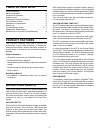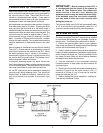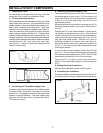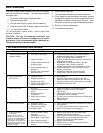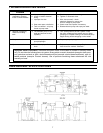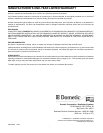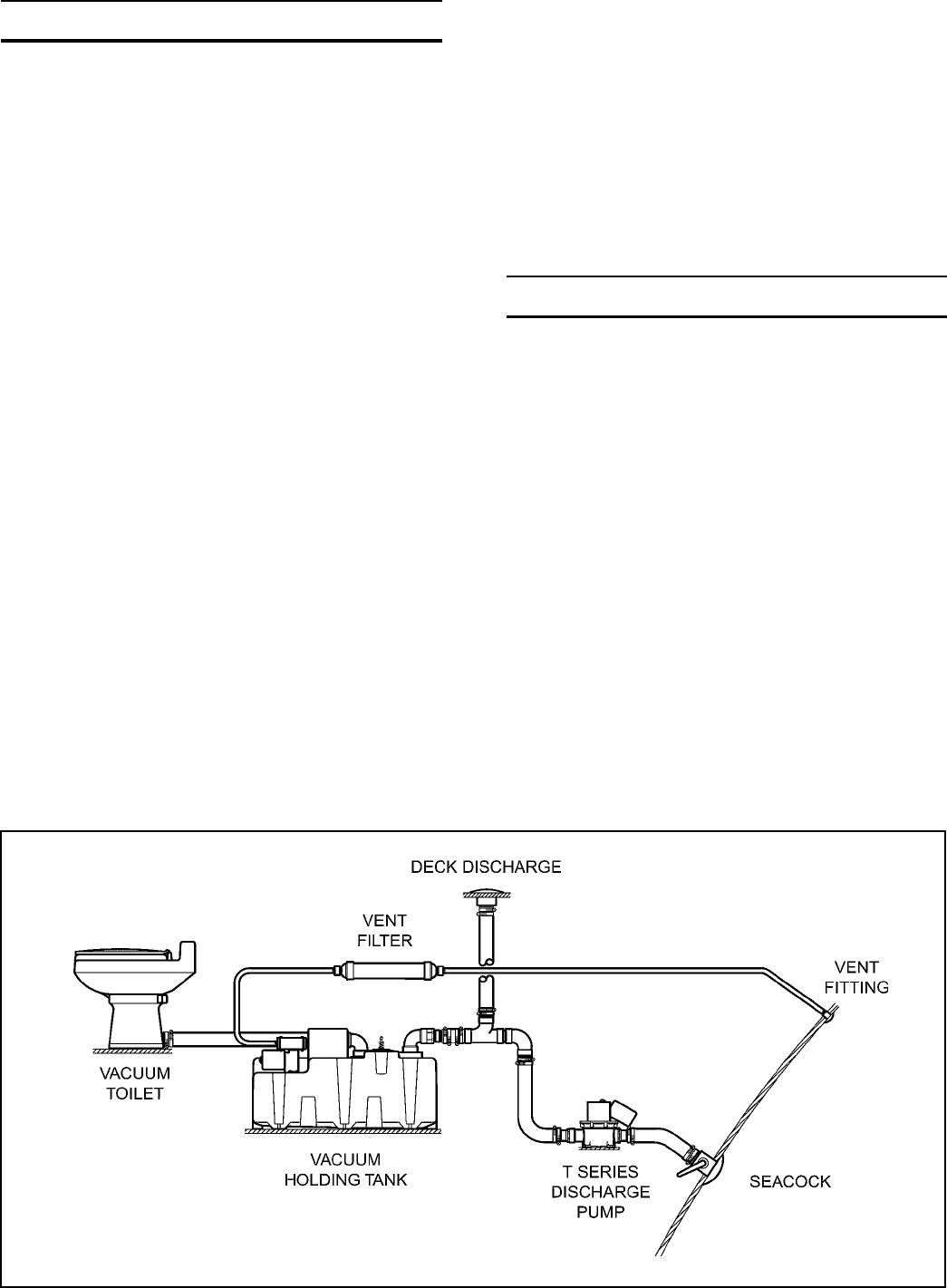
3
The Vacuum Holding Tank (VHT) system can be installed
on most boats that presently use a portable, manual or
electric toilet. The following procedure will be helpful:
1. Review the typical system layout to get a general
idea of how the system will operate and what discharge
options will be considered (see Figure 1).
2. Draw or obtain a layout of the boat which allows the
location of head compartments, bulkheads, engine space,
tanks, through-hull fittings, etc. This layout should include
top views and side views and show relative distances
and heights with reasonable accuracy.
3. Use the information in the Component Locating
Procedure section to help select the best locations for
your boat layout.
4. Routing of vacuum hose should be considered when
selecting a location for the toilet and the (VHT). A
maximum of 20 feet (6.1 m) of hose can be used be-
tween the toilet and the VHT.
5. Before starting the actual installation, carefully re-
view the Key Installation Points.
VacuFlush systems use a small amount of water (one
pint to one quart) and the vacuum that is generated by
the vacuum pump to flush. Each toilet must be con-
nected to a pressurized water system. Fresh water is
recommended and will result in an odor-free bathroom.
If seawater is used, the water should be filtered.
No complicated user instructions are required. Lifting the
flush lever adds water to the bowl. Pressing the flush
lever (or pulling the flush lever on a 106 toilet) opens a
mechanical seal that allows the vacuum force to pull the
waste from the bowl as clean water rinses the bowl. The
vacuum moves the waste (at approximately 7 feet [2.1
m] per second) through a one-inch opening in the toilet
base. Incoming air fragments the waste as it passes
through the base opening. This process eliminates the
need for macerators or mechanical motors in the toilet
base.
Next, the waste is transferred into the Vacuum Holding
Tank (VHT). System vacuum is monitored by a vacuum
switch that is located on the outside of the VHT. When
the switch senses a drop in vacuum in the system, it
automatically signals the pump to energize and bring
the vacuum back to operating level. This process is nor-
mally completed in about one minute.
In a properly operating system, the stored vacuum will
“leak” down between flushes, causing the vacuum pump
to run for a short period. The pump should not run more
than once every three (3) hours after the last flush.
An “On-Off” night switch can be installed to silence the
vacuum pump during sleeping hours. The VacuFlush
Status Panel, an optional accessory, features an inte-
gral circuit breaker that provides a convenient night
switch.
IMPORTANT: Before pumping out the VHT, it
is recommended that the power to the system be
turned off. Then, flush the toilet. This releases the
stored vacuum in the tank, thus, allowing the
dockside pump to empty the waste out more easily.
If the dockside pump has low suction capability,
you may need to flush the toilet a second time
during the pump out.
The Vacuum Relief Valve (VRV) will automatically open
at 13" of vacuum and is spring loaded to close at 11" of
vacuum to prevent leaking during normal operation.
Figure 1
PRINCIPLES OF OPERATION
SYSTEM LAYOUT




